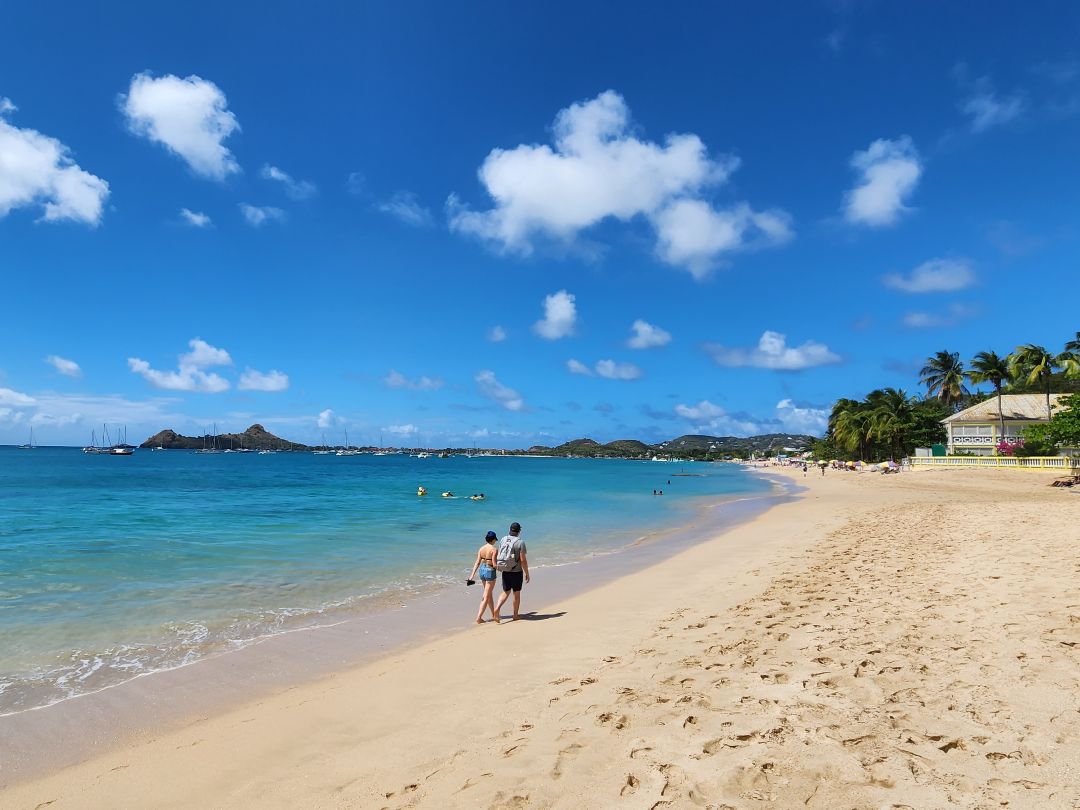It’s a place where beautiful mountain peaks rise from the Caribbean Sea. Saint Lucia, my island home, also known as the “Helen of the West,” features a beautiful landscape that is as captivating as its history. As a native Saint Lucian, I am thrilled to share some of the most fascinating facts about Saint Lucia with you, revealing what makes my island home truly special. Beyond what you may see of its perfect beaches in TV ads and social media posts, Saint Lucia is one of the Caribbean islands that has endless natural wonders, a vibrant cultural heritage, and a past that is as intriguing as the historical tales told about the Caribbean pirates who visited its shores. So read on to discover some St. Lucia facts that will surprise you.
Unveiling the “Helen of the West”: A Volcanic Island Paradise
You’ll often hear St. Lucia called the “Helen of the West,” and for good reason! Just like the legendary Helen of Troy, our island was fiercely sought after, changing hands between the British and French 14 times before finally settling under British rule. This back-and-forth struggle for dominance speaks volumes about St. Lucia’s strategic importance and undeniable allure.
A Landscape Forged by Fire
But long before colonial conflicts, it was volcanic activity that truly shaped our island’s destiny. St. Lucia’s dramatic topography is a testament to this fiery past. The most iconic evidence? The majestic Pitons. These twin peaks, rising dramatically from the sea, are more than just a stunning sight; they’re volcanic plugs, remnants of a molten history now designated a UNESCO World Heritage Site.
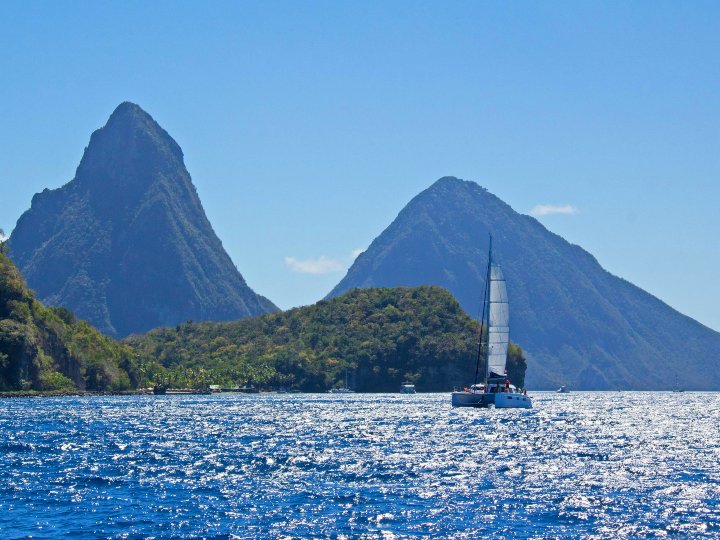
Even as a St. Lucian native, I am always amazed by the Pitons’ sheer size and grandeur, especially when viewed from the ocean during a boat ride. It’s amazing to think that these iconic peaks were formed by volcanic activity millions of years ago.
The World’s Only Drive-In Volcano
And the volcanic legacy doesn’t end there. Ever heard of a drive-in volcano? St. Lucia is home to the world’s only one! The Sulphur Springs is a must-visit, allowing you to experience the island’s geothermal energy up close and personal. Imagine warm volcanic pools, bubbling mud springs, and the unique aroma of sulfur – it’s an experience unlike any other. These natural wonders, born from the heart of the earth, offer a chance to relax and rejuvenate in a truly unique setting.
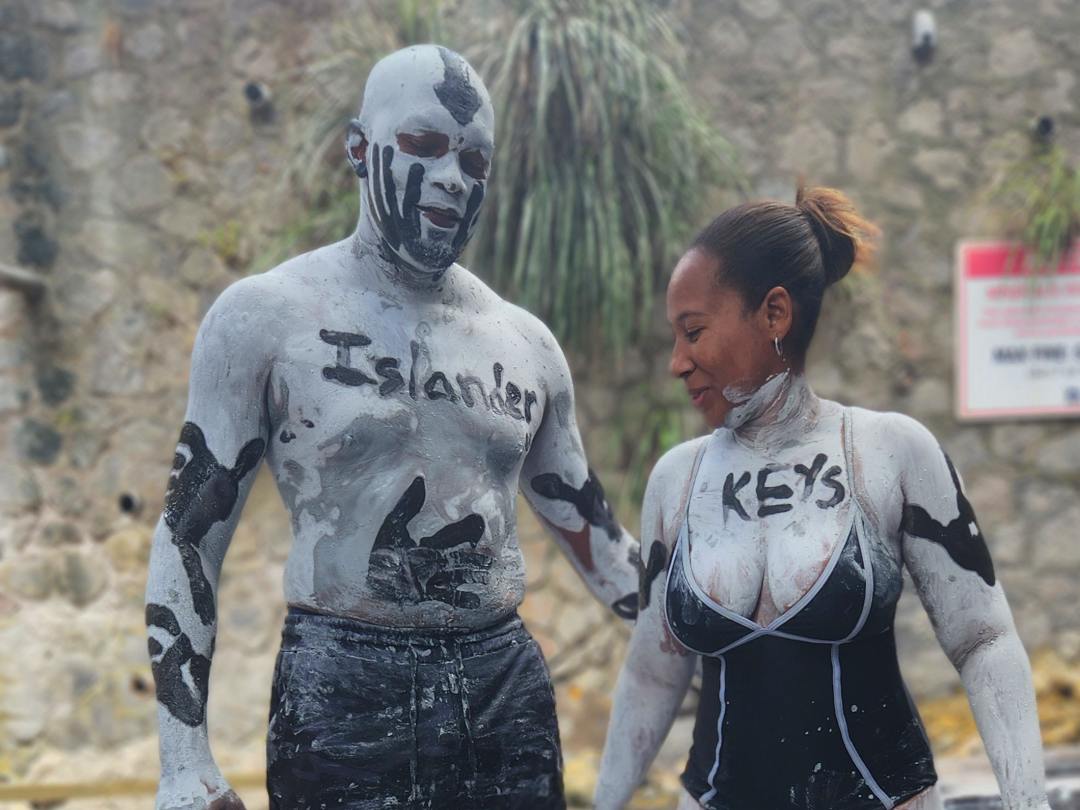
Visiting the Sulphur Springs is an experience that engages all your senses. You can feel the warmth of the volcanic mud on your skin, smell the pungent aroma of sulfur in the air, and hear the bubbling of the mud springs. But my favorite part is covering myself in the grey mud and decorating it with the darker mud. It makes for amazing photo ops! It’s a unique and unforgettable experience. If you’re visiting St. Lucia, don’t miss out on this unforgettable adventure. You can book a Sulphur Springs tour here.
More Than Just Beaches: Conquer the Trails of a Volcanic Landscape
St. Lucia’s volcanic origins don’t just make for dramatic scenery; they’ve also created a playground for adventurers! And what better way to experience this unique landscape than by lacing up your hiking boots and hitting the trails?
Challenge Yourself With A Piton Climb
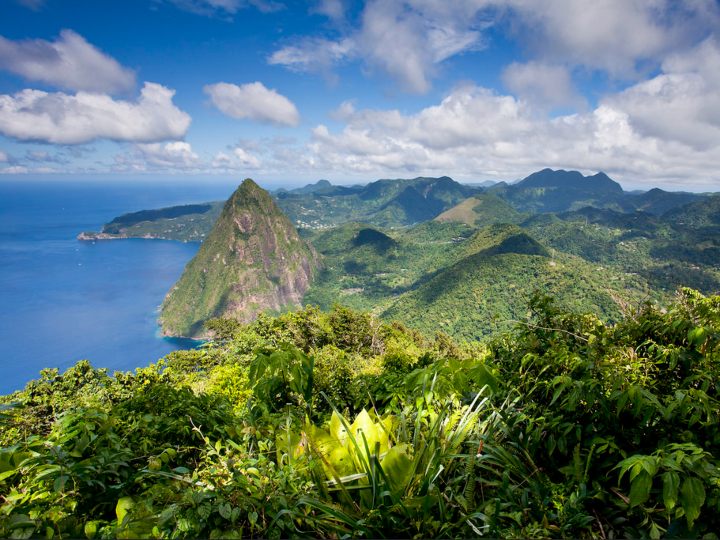
For those seeking a challenge with breathtaking rewards, conquering Gros Piton or Petit Piton is a must. Reaching the summit of these iconic peaks is no easy feat – it’s a steep climb, often described as strenuous – but the panoramic views from the top are simply unforgettable.
The first time I climbed Gros Piton, it was one of the most challenging physical things I’d ever done. But I’ve done it five times now, and every time I do it, the climb feels easier. The trail is steep and demanding in some places, but the views from the top are worth it. Standing on the summit, overlooking the entire island and the vast Caribbean Sea, is a truly awe-inspiring experience.
From up high, you’ll feel like you can see the whole island, its coastline stretching out before you, the lush rainforest blanketing the slopes, and the vast Caribbean Sea merging with the horizon.
Here’s a tip from a local: If you’re looking to save some money, consider arranging your transportation and guide fees independently. You’ll still need to pay the park entrance fee, but you can potentially cut down on the overall cost compared to booking a tour through a hotel.
Take a Scenic Hike on the Tet Paul Natrail Trail
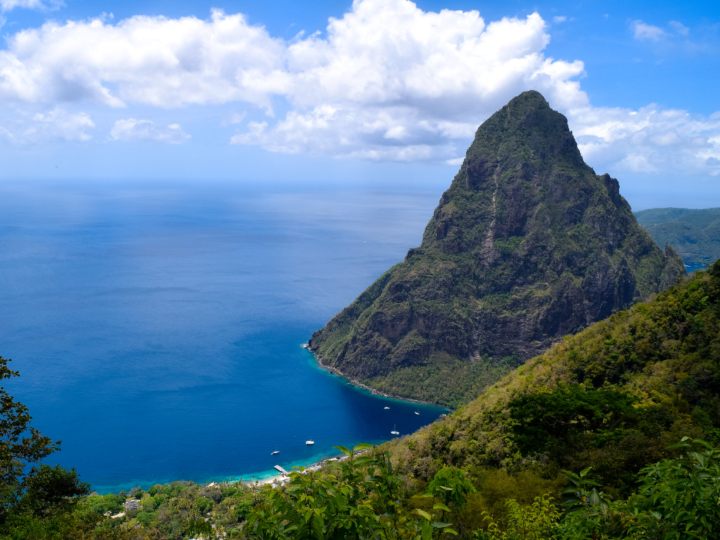
For a less strenuous hike, the Tet Paul Nature Trail is a fantastic option. This trail offers incredible scenic views of both Pitons without the intensity of the summit climb. It’s perfect for those who want to experience the beauty of the volcanic landscape at a more relaxed pace.
Want to explore more hiking options? Check out AllTrails.com for detailed information on hiking trails in St. Lucia.
Immerse Yourself in the Rainforest
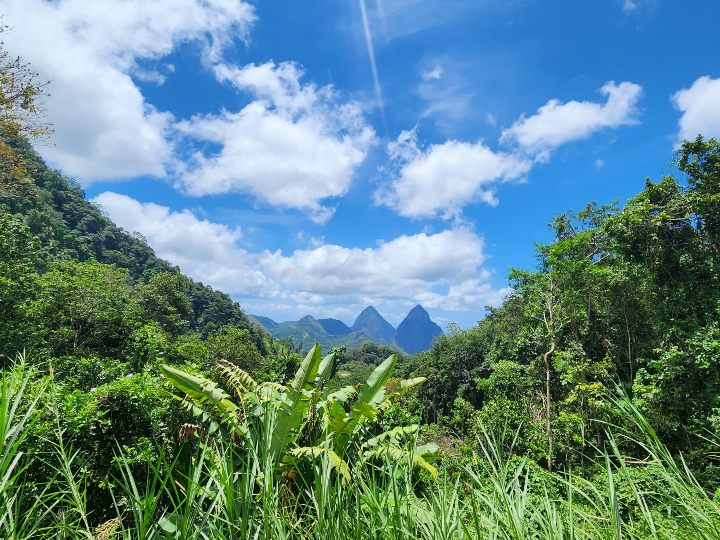
Beyond the volcanic peaks, St. Lucia is a verdant paradise thanks to its lush rainforest, covering over 70% of the island. Exploring these emerald depths is an adventure in itself, with hidden waterfalls, exotic flora and fauna, and a symphony of birdsong filling the air. It’s a world away from the beaches, offering a chance to connect with the island’s wild heart.
A History Forged in Fire: From Carib Inhabitants to Colonial Conflicts
Just as St. Lucia’s landscape was shaped by volcanic fire, so too was its history forged in the heat of conflict and change. The island’s turbulent past, marked by colonial struggles, is as captivating as its dramatic scenery.
The Island’s First Inhabitants
Before the arrival of Europeans, St. Lucia was home to indigenous peoples who recognized its natural bounty. The first inhabitants, the Arawak Indians, called the island Iyonola, meaning “island of the iguanas.” Later, the Caribs arrived and were hostile to European colonization attempts. The Caribs renamed it Hewanorra, which also translates to “island of the iguanas.”
A Strategic Prize
The arrival of Europeans in the early 16th century marked the beginning of a long and contested chapter in St. Lucia’s history. The island became a strategic prize in the struggle for colonial dominance in the Caribbean. Just like the mythical Helen of Troy, whose beauty sparked a legendary war, St. Lucia was fiercely sought after by European powers. This is why it earned the nickname “Helen of the West Indies.” Over the centuries, St. Lucia changed hands 14 times between the British and French, a testament to its coveted location and resources.
Independence at Last
After centuries of colonial rule, St. Lucia finally achieved its independence from Britain in 1979. The island remains a member of the Commonwealth, a testament to its enduring connection to its colonial past.
Embracing Heritage: The Cultural Tapestry of St. Lucia Today
St. Lucia’s history is a vibrant tapestry woven from threads of indigenous resilience, colonial struggles, and the enduring spirit of its people. This rich past has given birth to a unique cultural identity that embraces diversity and celebrates its heritage.
Creole Heritage Month: A Celebration of Cultural Fusion
Every October, St. Lucia comes alive with Creole Heritage Month, a time to immerse oneself in the island’s fascinating blend of cultures. This month-long festival showcases the captivating fusion of African, French, English, and Indian influences that have shaped St. Lucia’s music, food, language, and traditions. Visitors can experience:
- Colorful street parties bursting with energy and rhythm
- Art exhibitions showcasing the creativity and talent of St. Lucian artists
- The infectious beats of calypso, soca, dancehall, reggae, and zouk music
- The tantalizing aromas and flavors of St. Lucian cuisine, a delicious blend of culinary traditions
- The warmth and hospitality of the St. Lucian people, who are always eager to share their culture
One of the things I look forward to every year during Creole Heritage Month is attending the Jounen Kwéyòl celebrations. I love indulging in local dishes like cowheel soup and fish broth, and the streets of every community are filled with traditional Creole food. It’s a wonderful celebration of St. Lucian culture, and if you’re a foodie like me, it’s a must-do if you’re visiting St. Lucia in October.
The Language of the People
While English is the official language of St. Lucia, a French-based Creole, known as Patois (or Kwéyòl) is spoken by the majority of the population. This linguistic legacy reflects the island’s French colonial history and adds a unique dimension to its cultural landscape.
A Legacy of Excellence
St. Lucia holds a remarkable distinction: it boasts “more Nobel Prize Laureates per capita than any other country”. Two brilliant minds from this small island nation have been honored with this prestigious award: Sir Arthur Lewis, who won the Nobel Prize in Economics in 1979, and Derek Walcott, who received the Nobel Prize in Literature in 1992. This is a testament to the intellectual vibrancy and creative spirit that thrives in St. Lucia.
St. Lucia’s vibrant culture is a testament to its resilience and the enduring spirit of its people. It’s a place where history and modernity intertwine, where tradition meets innovation, and where visitors are welcomed with open arms.
Unlocking the Treasure Chest: Uncovering the Myths and Legends of St. Lucia
St. Lucia is an island steeped in vibrant culture and captivating history, but beneath the surface of its modern-day charm lies a hidden layer of intrigue—a world of pirate lore and buried treasure that adds a touch of mystery and adventure to the island’s story.
Blackbeard’s Lost Treasure: A Persistent Rumor
One of the most persistent rumors surrounding St. Lucia involves the infamous pirate Blackbeard. Legend has it that he buried some of his ill-gotten gains in Vieux Fort, a town on the southern tip of the island. While no one has ever unearthed Blackbeard’s treasure, the story adds a certain allure to St. Lucia, sparking the imagination of visitors who dream of finding a pirate’s bounty.
Peg Leg’s Lair: Pigeon Island’s Pirate Past
Another notorious pirate who frequented St. Lucia was “Peg Leg,” also known as Jambe De Bois. Unlike Blackbeard’s elusive treasure, Peg Leg left a tangible mark on the island. He used Pigeon Island as his base of operations, launching attacks on Spanish ships from its strategic vantage point.
Pigeon Island: A Window into the Past
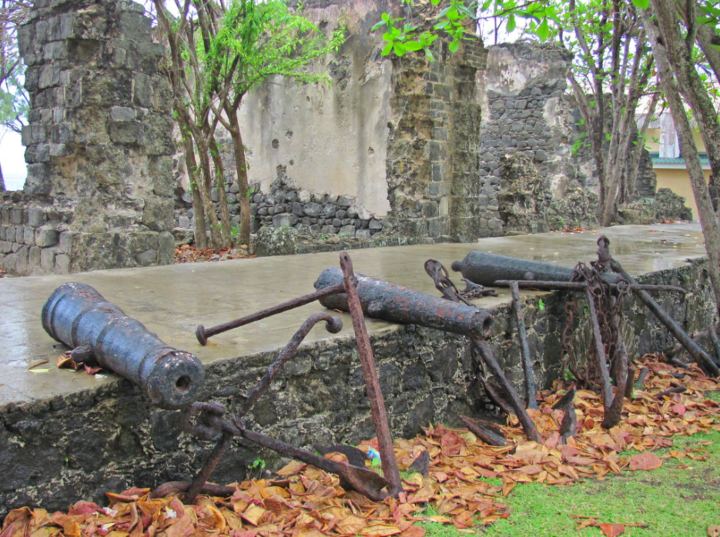
Today, Pigeon Island is connected to the mainland and is a designated National Landmark, a testament to its historical significance. It’s a must-visit destination for those seeking to delve into St. Lucia’s swashbuckling past.
Visitors can explore:
- Preserved military ruins
- Fortifications
- Museums that offer a glimpse into the island’s role in colonial conflicts and its connection to the world of pirates.
While the legends of buried treasure may remain elusive, the stories themselves contribute to the island’s captivating charm. St. Lucia invites visitors to embrace its rich history, to imagine the clash of swords and the thrill of pirate adventures, and to uncover the secrets hidden within its enchanting landscape.
Conclusion
From its dramatic volcanic peaks to its pristine beaches, St. Lucia offers a captivating blend of natural beauty, adventure, history, and culture. Our unique Caribbean island invites exploration and discovery. Whether you’re seeking thrilling hikes through lush rainforests, relaxation on sun-kissed shores, or a journey through time to uncover its pirate lore, St. Lucia has something to offer every traveler.
Experience the warmth of its people, the vibrant rhythms of its music, and the tantalizing flavors of its cuisine. St. Lucia’s cultural tapestry is as rich and diverse as its landscape. Discover hidden waterfalls, explore colorful coral reefs, and delve into the island’s fascinating past, marked by colonial struggles and indigenous resilience.
St. Lucia awaits, ready to share its secrets and create unforgettable memories.

Damian is a co-founder, editor, and author at Islanderkeys. He is also a dedicated father and husband. Damian is an IT Manager / Web developer by profession, but he loves to Blog and share his knowledge about St. Lucia in travel forums.
